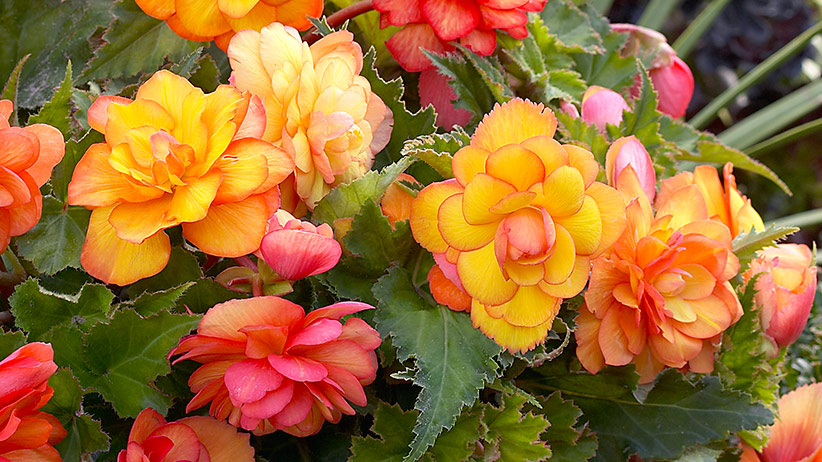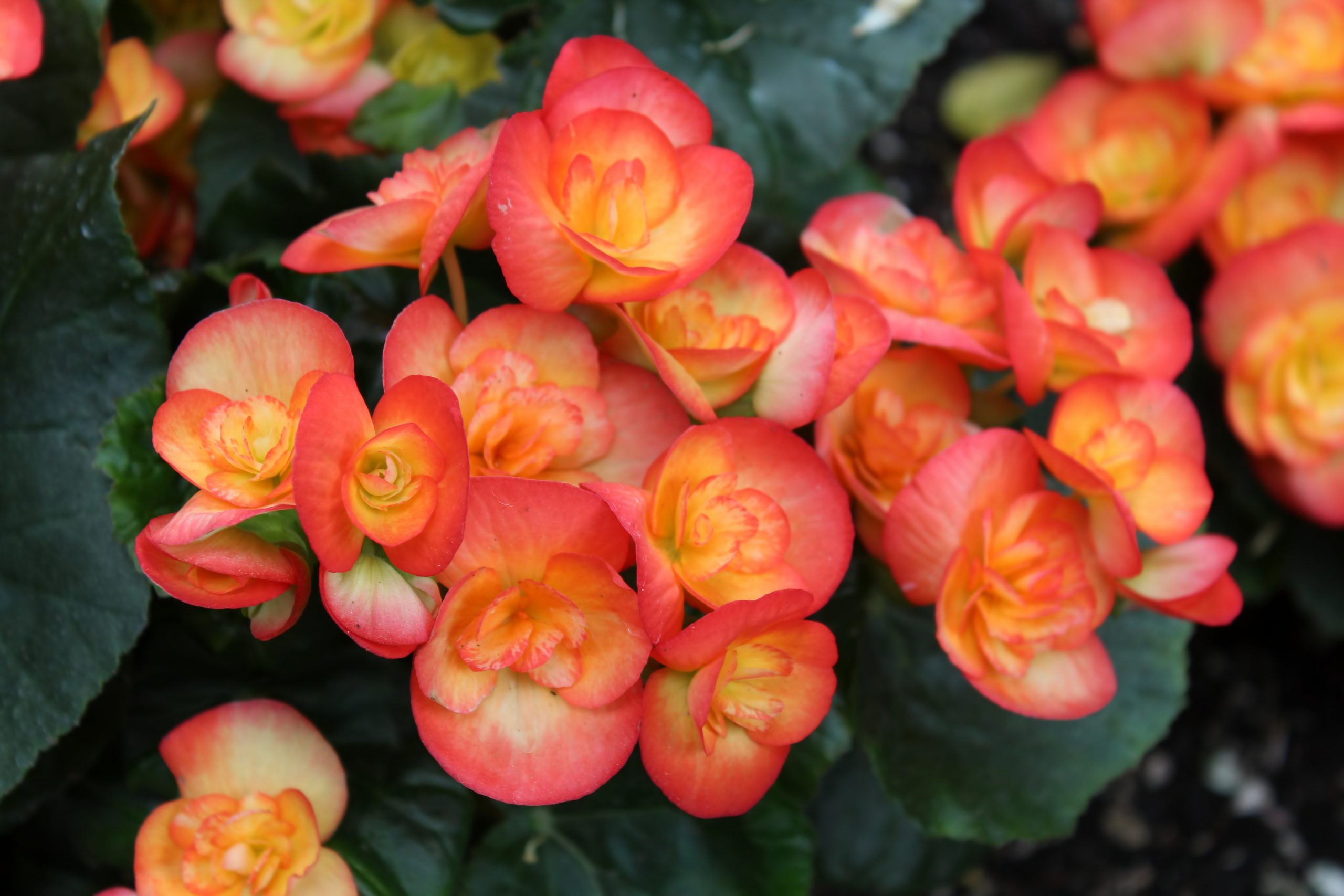Unlocking the Secrets of Begonia Blooms
Timing is crucial when it comes to planting begonia bulbs. Planting at the right time can make all the difference between a vibrant, blooming garden and a lackluster display. When to plant begonia bulbs is a critical consideration, as it can affect the timing and quality of the blooms. By planting at the right time, gardeners can ensure that their begonias receive the necessary conditions to thrive, including adequate light, water, and nutrients. On the other hand, poor timing can lead to weak, spindly growth, and a lack of blooms. For example, planting begonia bulbs too early in the spring can expose them to frost, while planting too late can result in weak growth. By understanding the importance of optimal planting, gardeners can set themselves up for success and enjoy the beauty of these stunning flowers.
Understanding Begonia Varieties: Choosing the Right Bulbs
With over 1,800 species of begonias, selecting the right variety for your garden can be a daunting task. However, understanding the different types of begonia bulbs is crucial for optimal blooming and growth. There are three main types of begonia bulbs: tuberous, rhizomatous, and fibrous-rooted. Tuberous begonias are the most popular variety and produce large, showy flowers. Rhizomatous begonias have a thick, underground stem that produces new growth, while fibrous-rooted begonias have a more delicate root system. When choosing a begonia variety, consider your climate and desired bloom time. For example, tuberous begonias thrive in cooler climates and bloom in the summer, while rhizomatous begonias prefer warmer temperatures and bloom in the spring. By selecting the right variety, gardeners can ensure that their begonias receive the necessary conditions to thrive, including adequate light, water, and nutrients. This, in turn, will affect when to plant begonia bulbs, as different varieties have different planting times.
How to Prepare Your Garden for Begonia Bulbs
Before planting begonia bulbs, it’s essential to prepare the soil and create an ideal environment for them to thrive. Begonias prefer well-draining soil that is rich in organic matter. To achieve this, mix in a 2-inch layer of compost or well-rotted manure into the soil. Additionally, begonias require a location that receives partial shade to full sun, depending on the variety. When selecting a location, consider the mature size of the begonia plant and ensure there is enough space for it to grow. It’s also crucial to choose a location with good air circulation to prevent fungal diseases. By preparing the soil and selecting the right location, gardeners can set themselves up for success and ensure optimal blooming when to plant begonia bulbs. Furthermore, begonias have specific pH requirements, ranging from 6.0 to 7.0, so it’s essential to test the soil pH and adjust it accordingly. By taking these steps, gardeners can create an ideal environment for their begonias to thrive.
The Ideal Planting Time for Begonias: A Regional Guide
When it comes to planting begonia bulbs, timing is crucial. The ideal planting time varies depending on the region, climate, and temperature. In general, begonias thrive in temperatures between 60°F to 75°F (15°C to 24°C). In regions with mild winters, such as USDA Hardiness Zones 9-11, begonias can be planted in the fall, typically from September to November. In areas with cold winters, such as USDA Hardiness Zones 3-8, begonias should be planted in the spring, usually from March to May, after the last frost date. In regions with a moderate climate, such as USDA Hardiness Zones 4-7, begonias can be planted in either the spring or fall, depending on the specific variety. It’s essential to check the specific frost dates for your area and plan accordingly. For example, in the Northeast, begonias should be planted in late April to early May, while in the Southwest, they can be planted in late September to early October. By planting begonias at the right time, gardeners can ensure optimal blooming and healthy growth. Remember, when to plant begonia bulbs depends on your region, so make sure to research the specific needs of your area.
Spring vs. Fall Planting: Which is Best for Begonias?
When it comes to planting begonia bulbs, gardeners often wonder whether to plant in the spring or fall. Both seasons have their advantages and disadvantages, and the right choice depends on the specific climate and region. Spring planting, typically from March to May, is ideal for begonias in areas with cold winters. This allows the bulbs to establish themselves before the heat of summer. On the other hand, fall planting, usually from September to November, is suitable for regions with mild winters. This enables the bulbs to establish themselves before the winter months. In terms of when to plant begonia bulbs, spring planting is beneficial for begonias that require a period of cold stratification, such as tuberous begonias. Fall planting, however, is better suited for begonias that thrive in warmer temperatures, such as rhizomatous begonias. Ultimately, the decision between spring and fall planting comes down to the specific needs of the begonia variety and the local climate. By understanding the pros and cons of each approach, gardeners can make an informed decision and ensure optimal blooming and healthy growth.
Common Mistakes to Avoid When Planting Begonia Bulbs
When planting begonia bulbs, it’s essential to avoid common mistakes that can hinder optimal growth and blooming. One of the most critical errors is planting the bulbs too deep or too shallow. Begonias require a specific planting depth, typically 1-2 inches, to ensure proper growth. Planting too deep can cause the bulbs to rot, while planting too shallow can expose them to extreme temperatures and moisture fluctuations. Another common mistake is failing to prepare the soil properly. Begonias thrive in well-draining, fertile soil with a pH between 6.0 and 7.0. Not providing the right soil conditions can lead to poor growth and reduced blooming. Additionally, gardeners should avoid planting begonia bulbs in areas with standing water or where water tends to collect, as this can cause root rot. By being aware of these common mistakes, gardeners can take steps to correct them and ensure healthy growth and optimal blooming. Remember, when to plant begonia bulbs is crucial, but it’s equally important to plant them correctly to reap the rewards of beautiful blooms.
Caring for Your Begonias After Planting
After planting begonia bulbs, proper care is essential to ensure healthy growth and optimal blooming. Watering is crucial, as begonias require consistent moisture, especially during the first few weeks after planting. However, it’s essential to avoid overwatering, which can lead to root rot. A general rule of thumb is to water begonias when the top 1-2 inches of soil feel dry to the touch. Fertilizing is also vital, as begonias are heavy feeders. A balanced, water-soluble fertilizer applied every 2-3 weeks will provide the necessary nutrients for healthy growth. Pruning is another critical aspect of begonia care. Remove any dead or dying leaves or stems to prevent the spread of disease and encourage bushy growth. Additionally, begonias benefit from regular division and repotting to maintain their vigor and promote blooming. By following these post-planting care tips, gardeners can enjoy vibrant, thriving begonias that will bloom beautifully when the time is right. Remember, knowing when to plant begonia bulbs is just the first step; proper care after planting is equally important for success.
Troubleshooting Common Begonia Problems
Despite proper care, begonias can still encounter problems that hinder their growth and blooming. One common issue is pests, such as aphids, whiteflies, and spider mites, which can be controlled using insecticidal soap or neem oil. Fungal diseases, like powdery mildew and root rot, can be prevented by providing good air circulation, removing infected leaves, and treating with fungicides. Nutrient deficiencies, particularly a lack of iron or magnesium, can cause yellowing leaves or stunted growth, and can be addressed by applying balanced fertilizers. Another issue is overwatering, which can lead to root rot and poor drainage, and can be resolved by adjusting watering schedules and improving soil drainage. By being aware of these common problems and taking prompt action, gardeners can minimize their impact and ensure healthy, thriving begonias. Remember, knowing when to plant begonia bulbs is crucial, but it’s equally important to be prepared to troubleshoot any issues that may arise during the growing season.


:max_bytes(150000):strip_icc()/growing-wax-begonias-5079936-02-f392d1fd77f64631a64a1237dd34b153.jpg)






